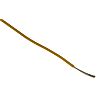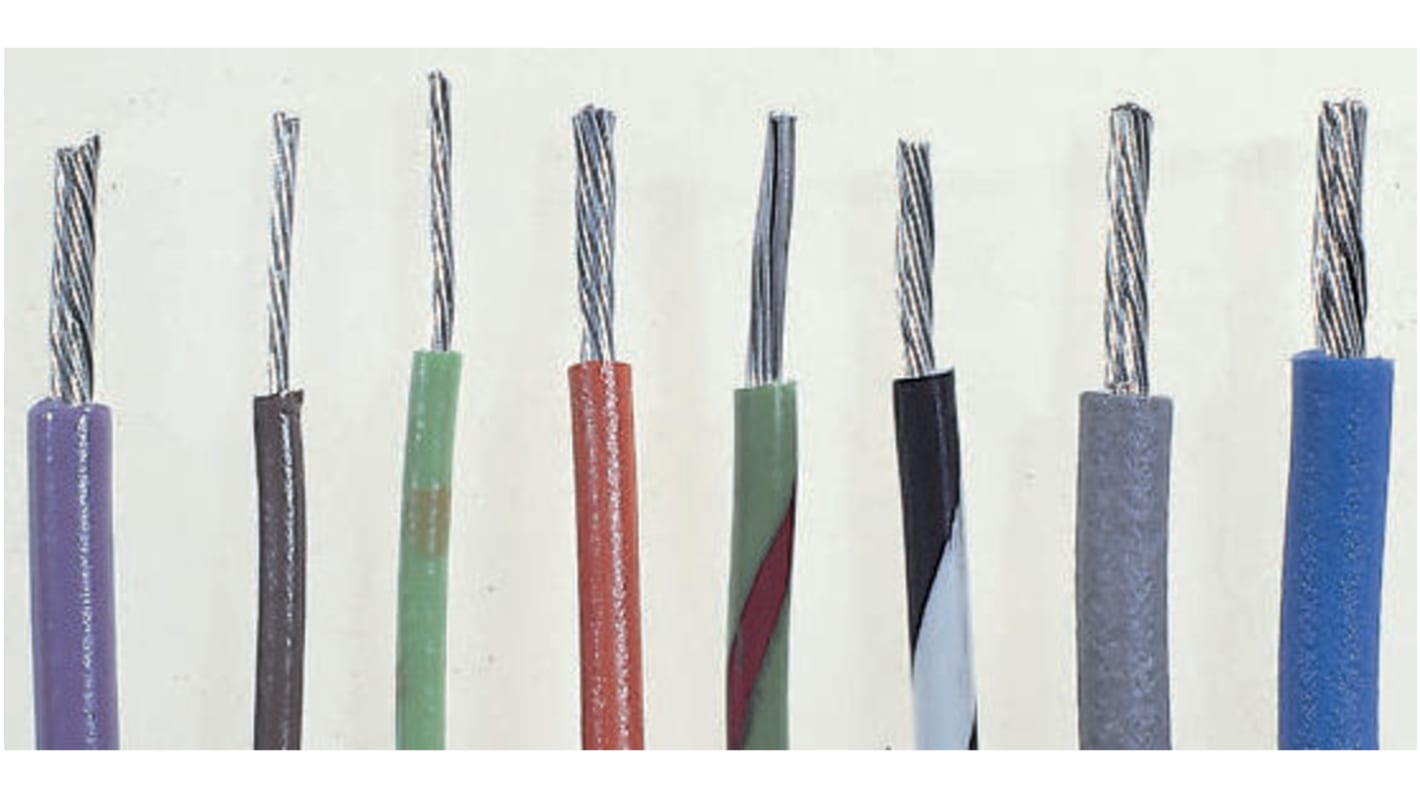RS PRO Yellow 0.75 mm² Equipment Wire, 24/0.2 mm, 100m, PVC Insulation
- RS Stock No.:
- 356-713
- Brand:
- RS PRO
Discontinued product
Alternative

RS PRO Yellow 0.75 mm² Equipment Wire, 18 AWG, 24/0.2 mm, 100m, PVC Insulation
£19.75
1 Reel of 100 Metre(s)
RS Stock No.: 748-2285
- RS Stock No.:
- 356-713
- Brand:
- RS PRO
RS Pro Hook Up Wire
Brought to you by RS Pro, these wires are intended for internal wiring applications in electrical and electronic equipment, they meet the requirements of IEC60332-1. The high-quality inner conductor defines the flexibility and conductivity of the wire. Tin used in conjunction with copper boosts the copper’s properties and helps the wire to last much longer and counter acts against oxidation. They are simply more flexible and resistant to bending. At the same time, a particular cross-section of stranded conductor gives it essentially the same resistance characteristics as a single-strand conductor, but with added flexibility. All models are highly reliable and excellent quality.
Features and Benefits
• PVC sheath material for insulation
• Stranded tinned copper
• 0.45mm PVC wall thickness
• Supplied on 100 m or 500 m reels
• Stranded tinned copper
• 0.45mm PVC wall thickness
• Supplied on 100 m or 500 m reels
What is hookup wire?
Hook up wire, or copper wire/equipment wire as it's also called is primarily used for low voltage and current applications. Copper strands are sheathed by a cover (usually PVC) and act as the conductor of electricity to power its target. Frequently found within everyday household and workplace appliances, hook up wire is a common occurrence. If a device has multiple wires to operate, hook up wire will usually be installed with different sheath colours on their respective terminals. This is to avoid the confusion of a "spaghetti junction" of wires.
What is hook up wire used for?
This equipment wire can be applied to endless applications. these can range from domestic household appliances, industrial equipment and factory machine. Due to the reliability of the copper conductors, these types of wires are usually the preferred choice with any internal wiring system. As an example, these are some common places you would find equipment wire:
• Circuit boards
• Computer internals
• Mobile phones and other battery operated devices
• Circuit boards
• Computer internals
• Mobile phones and other battery operated devices
Benefits of a copper conductor
Copper is the go to metal for nearly all cable. Due to the excellent conduction of electricity it provides. Circuit boards, telephone lines, power cables (including multicore) all use copper as the solid interior of their wire. There are different variations of copper available, such as:
• Tinned copper
• Annealed copper
• Nickel plated copper
• Tinned copper
• Annealed copper
• Nickel plated copper
Standards
BS 4808 - Part 2; BS 6004; IEC 189-3
Flexible cables for equipment cabling
These cables are designed to be used for the internal cabling of electrical and electronic equipment. The yellow and green cable is not suitable for earth connections.
Attribute | Value |
|---|---|
| Cross Sectional Area | 0.75 mm² |
| Sheath Colour | Yellow |
| Cable Shape | Single Core |
| Core Strands | 24/0.2 mm |
| Length | 100m |
| Insulation Material | PVC |
| Voltage Rating | 1.5 kV ac |
| Outer Diameter | 2.45mm |
| Minimum Operating Temperature | -20°C |
| Maximum Operating Temperature | +85°C |
| Conductor Material | Tinned Copper |
| Insulation Wall Thickness | 0.6mm |
| Shield Type | Unshielded |
| Number of Strands | 24 |
| Size of Strands | 0.2 mm |

